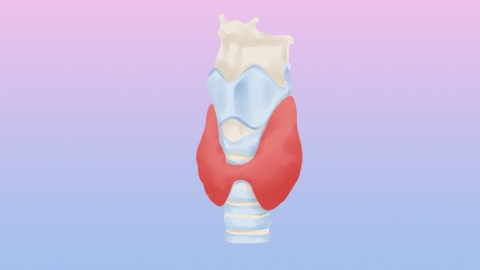How to treat thyroid category 3?
In general, the main treatment approaches for category 3 thyroid nodules include regular follow-up observation, lifestyle interventions, medication, minimally invasive ablation therapy, and surgical treatment. A detailed analysis is as follows:

1. Regular Follow-up Observation
Category 3 thyroid nodules are mostly benign with a low risk of malignant transformation. Regular monitoring allows timely detection of changes in the nodule. Thyroid ultrasound should be performed every 6–12 months to evaluate nodule size, morphology, and margins. Thyroid function tests should also be conducted simultaneously to provide a basis for further management.
2. Lifestyle Interventions
Poor lifestyle habits may affect thyroid function and exacerbate nodule progression. It is important to maintain a regular daily routine and avoid staying up late; reduce intake of high-iodine foods such as kelp and nori; maintain emotional stability, avoid prolonged anxiety and stress, and enhance the body’s overall regulatory capacity.
3. Medication
Drug therapy is required when thyroid dysfunction is present. For patients with hypothyroidism, levothyroxine sodium tablets should be taken as prescribed by a physician. For those with hyperthyroidism, medications such as methimazole or propylthiouracil may be used to regulate hormone levels and control disease progression, thereby indirectly stabilizing the nodule status.
4. Minimally Invasive Ablation Therapy
This approach is suitable for patients with larger nodules causing compressive symptoms. Under ultrasound guidance, an ablation needle is inserted into the nodule, using thermal energy to induce necrosis and absorption of the nodule tissue, thus reducing its size. This method is minimally invasive and allows for rapid recovery, effectively relieving patient discomfort.
5. Surgical Treatment
Surgery is indicated for nodules that grow rapidly, are suspected of malignancy, or cause significant compression symptoms. Common procedures include thyroid nodule excision. If the nodule involves a large area, partial thyroidectomy may be performed. Postoperative monitoring of thyroid function is essential, and hormone replacement therapy may be needed when necessary.
Patients must strictly follow medical advice when choosing a treatment plan and should not adjust or discontinue medications on their own. If any change in nodule characteristics is detected during follow-up, patients should immediately consult their doctor to adjust the treatment strategy promptly, ensuring effective disease control.






